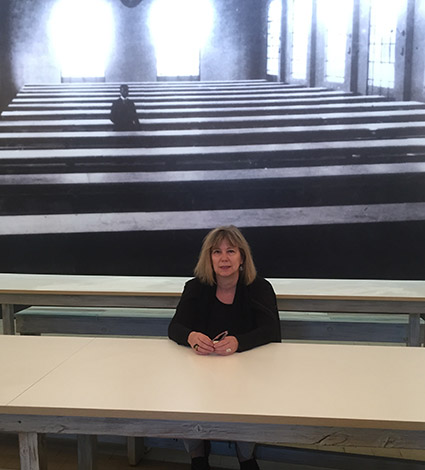Juan Vélez conserva grabados en su memoria de muchacho de diecinueve años las vivencias del viaje, a partir del instante en que cruzó la pasarela del “ Winnipeg”: Aún me estremezco al recordar los pitazos que lanzaba a la noche el “Winnipeg”, cuando lentamente desatracaba del muelle de Trompeloup. Afirmado a la barandilla de cubierta, vi a muchos refugiados que se quedaban alli, porque no habían podido embarcar. Para unos, el partir era la libertad absoluta y el reencuentro con la vida; para otros, era dejar la mitad de su vida en una parte e irse a solas con la otra mitad. Yo llegué al muelle a las seis o siete de la mañana y a las once me encontraba ya en cubierta. Estaba solo, observando cada detalle, y no conocía a nadie de los tantos que me rodeaban ese día de un agradable sol de otoño. Después encontré a unos amigos con los que estuve en Agde.
Antes del zarpe repartieron las literas. Daban órdenes por altavoces en francés y castellano. Mi litera quedaba en una de las bodegas inferiores. Había tres corridas de literas en altura para unas cincuenta personas. Cada litera tenía una frazada y una colchoneta de paja. Como el lugar carecía de ventilación, habían instalado un par de ventiladores. Los cincuenta hombres compartíamos un excusado que habían improvisado. Mediante sorteo, me tocó la segunda litera, pero la cambié voluntariamente por la de más arriba para dejarle la otra a un hombre mayor. Por altavoces nos indicaron dónde funcionaba la enfermería – q u e venía a cargo de la hija del Presidente del Partido Comunista francés- y los turnos para ocupar el comedor. La tripulación era toda francesa y de trato muy agradable.
Ninguno de nosotros dejó de ofrecerse para colaborar en diferentes actividades: en la cocina, pelando patatas, limpiando la cubierta, etc. Sobraban voluntarios. Todos también respetábamos nuestros turnos para recibir la alimentación. Desayuno a las ocho, almuerzo a las doce y media y cena a las seis de la tarde. La comida no era muy buena, pero sí muy superior a la del campo de concentración. Daban garbanzos, lentejas, porotos; alguna vez hubo tortilla. Si tenías dinero, podías tomarte una cerveza o un licorcito en el pequeño bar que funcionaba en cubierta.
A ciertas horas del día se escuchaba música por los altavoces. Aunque no era muy variada. “Valencia” era una de las que tocaban frecuentemente, además de un tango y, por supuesto, “La Marsellesa”. En el viaje conversábamos mucho entre nosotros: fútbol, política y
especialmente de nuestras historias personales. A menudo las conversaciones finalizaban preguntándonos qué tía a ser de nosotros en Chile. Junto a una de las escaleras que conducían a las bodegas, había un gran mapa de Chile. Me interesé por ubicar algunos puntos geográficos para ir ambientándome. Unos cuantos nombres se me grabaron inmediatamente, como el de Putaendo. ¡Qué curioso me parecía ese nombre!
Relato encontrado en Los españoles del Winnipeg : el barco de la esperanza / Jaime Ferrer Mir. 1a. ed. Santiago : Cal Sogas, impresión de 1989 (Santiago : Salesianos) 202 p. Se puede bajar en http://www.memoriachilena.cl/602/w3-article-98685.html



